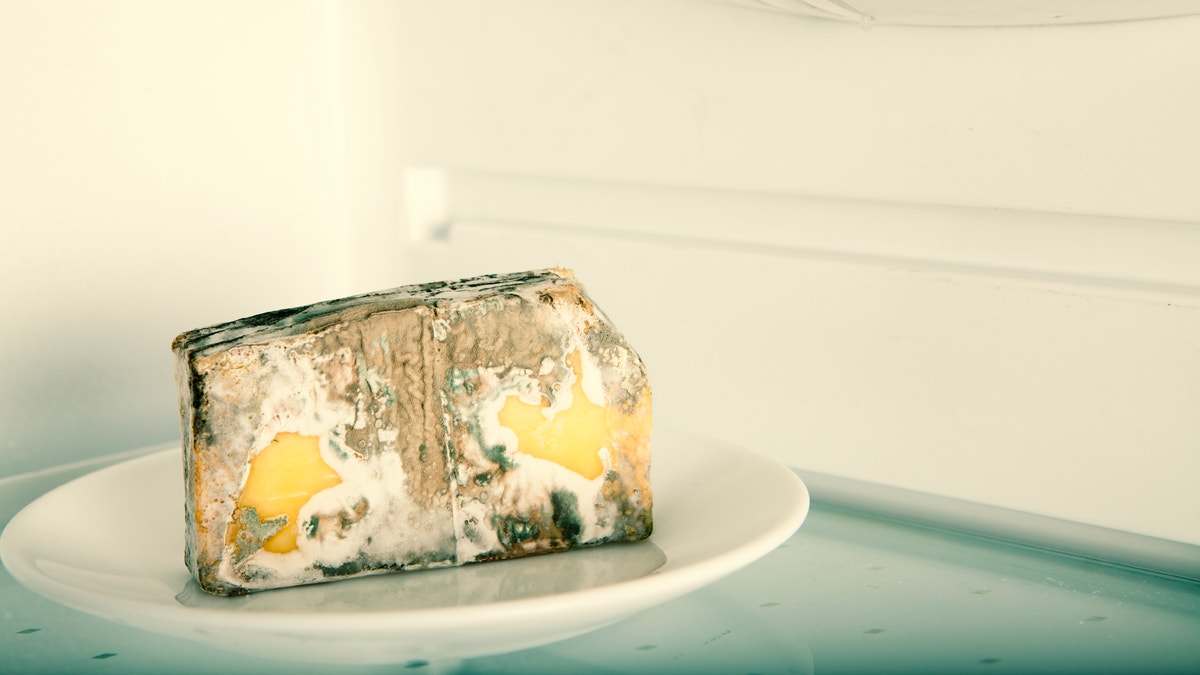
The situation: You bought a really nice wedge of Parmesan that you've been meaning to dig into all week, but when you finally pull it from the fridge and get ready to grate it over your pasta, you see it: Fuzzy, greenish-blue spots of mold have sprouted all over your expensive cheese.
What you're worried about: You definitely don't want to chuck the whole thing in the trash. But is it safe to cut off the moldy part and eat the rest?
The very worst that could happen: In rare cases, some molds produce toxins that can make you extremely sick—one of these toxins is even linked to liver cancer.
But first, let's back up a little. The most important thing to know when it comes to the health dangers of mold is the type of food you find it on, whether it's cheese, bread, meat, fruits, or veggies. With hard foods like Parmesan, carrots, and salami, it's totally safe to remove the moldy area and keep eating. But with soft foods like Brie, bread, or grapes, you should toss the entire thing in the trash. (Here are the best clean eating cheese snacks for cheese lovers.)
"Think of mold as a weed," said Susan Whittier, PhD, director of the clinical microbiology service at New York Presbyterian/Columbia University Medical Center. "Even though you pull it out, it still has roots and it's just going to grow back."
In other words, she says, mold can spread through soft foods like grapes, spoiling the whole batch even if you remove the affected, moldy area. But dense, hard foods like Parmesan are safe, since mold can't penetrate and spread.
More: Lose up to 13 lbs by detoxing. Learn the one simple secret now!
If you do end up accidentally eating mold, though, the results can be serious. In many people, inhaling mold while chewing can lead to respiratory problems and allergic reactions, Whittier said. And in the worst, worst case scenario, you could eat a mold that's producing a poisonous substance called a mycotoxin, most commonly found in grains and nuts. There are different types of mycotoxins and symptoms can vary, but the World Health Organization reports that consumption or exposure can cause vomiting, diarrhea, dizziness, abdominal pain, internal bleeding, and more. One type of mycotoxin called aflatoxin is even a potent carcinogen linked to liver cancer.
Finally, mold sometimes (but not always) indicates the presence of bacteria that can cause food poisoning. (Here's how your food gets contaminated.)
What will probably happen: Most likely, nothing. After all, we've all probably eaten a slice of bread from a slightly moldy loaf and come out on the other side. And of course, the molds used to make cheeses like gorgonzola are totally safe.
More: 6 Surprising Foods That Can Make You Seriously Sick
The bottom line: Not all molds are harmful, but experts say it's just not worth taking the chance, especially if you have a compromised immune system. If you see mold on any soft food, even if it's just a tiny spot, assume the whole thing is contaminated, put it in a bag (to prevent the release of mold spores), and throw it into the trash. And don't sniff it to see if it's "good:" Inhaling spores can trigger those allergic reactions and respiratory issues.
But if you see mold on a hard cheese or other dense food, cut at least 1 inch around the entire mold spot, Whittier says. (But don't scrape it off, which can release mold spores.) Then store the food in a new container or plastic wrap, since the previous one might still have mold growing inside it.
For more info on mold and specific foods, check out this detailed guide from the USDA.




















